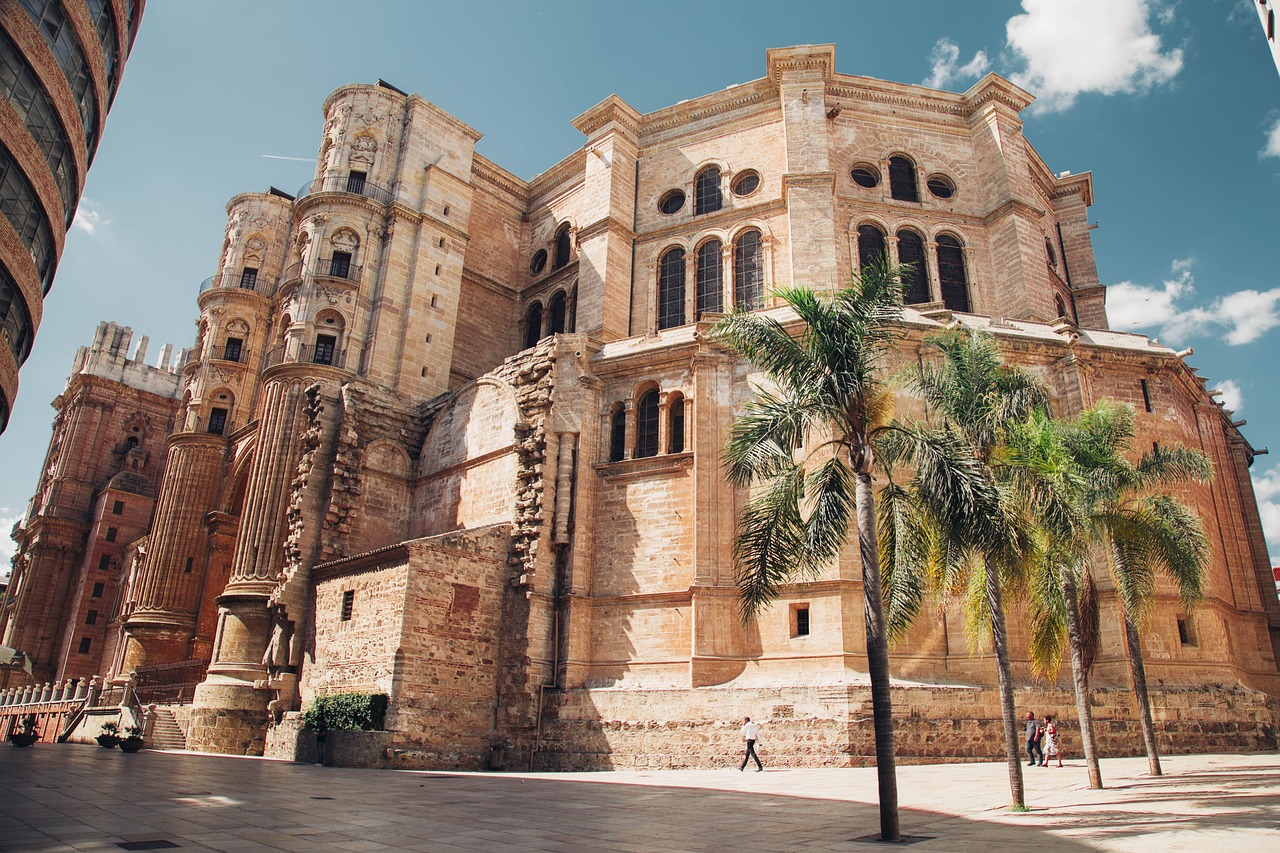Spain stands as a testament to architectural brilliance, with a landscape dotted by structures that narrate tales of history, culture, and innovation. This article aims to guide you through some of Spain’s most awe-inspiring architectural wonders, each a beacon of creativity and ingenuity. While Spain boasts countless historic cathedrals, modernist landmarks, and ancient fortresses, we’ll focus on those iconic edifices that promise an unforgettable visual and cultural feast.
The Sagrada Familia, Barcelona
No exploration of Spanish architecture is complete without marveling at Antoni Gaudí’s masterpiece, the Sagrada Familia. This basilica is a symphony in stone, its spires reaching towards the heavens as if in silent prayer. Gaudí’s innovative use of naturalistic motifs, seen in the intricate facades depicting scenes from the Nativity and the Passion of Christ, ensures that the Sagrada Familia is more than a church; it’s a narrative sculpture. Despite being under construction since 1882, the basilica’s unfinished state adds to its allure, inviting visitors to witness a work of art in progress.
The Alhambra, Granada
Perched atop the rolling hills of Andalusia, the Alhambra stands as a majestic reminder of Spain’s Moorish past. This fortress-palace complex is a delicate mélange of Islamic art and Iberian culture, with its ornate stucco walls, intricate arabesques, and reflective pools mirroring the clear blue skies. The Alhambra is not just an architectural wonder; it’s a historical narrative set in stone and water, telling stories of the Nasrid dynasty, the Reconquista, and the blend of cultures that defines Spain.
Ciudad de las Artes y las Ciencias, Valencia
Transitioning from historical grandeur to futuristic splendor, Valencia’s City of Arts and Sciences is a testament to modern Spain’s ambition and creativity. Designed by Santiago Calatrava and Félix Candela, this scientific and cultural complex captivates with its avant-garde structures that resemble skeletons of whales or eyes opening into the future. The Oceanogràfic, the largest aquarium in Europe, and the Hemisfèric, an IMAX cinema that doubles as a planetarium, are just two of the many marvels that await visitors.
Casino de Madrid, Madrid
While not as frequented by tourists as Spain’s other architectural sites, the Casino de Madrid deserves a spot on this list for its exquisite design and historical significance. Situated on the bustling Calle de Alcalá, this private social club, established in 1836, showcases a blend of styles, from its neo-classical facade to the modernist and baroque interiors. The building is a treasure trove of artistic and architectural details, including stunning staircases, ornate ceilings, and luxurious lounges. It’s a glimpse into the opulent lifestyle of Madrid’s elite in the 19th and 20th centuries, even if its primary function isn’t gambling in the traditional sense.
Guggenheim Museum, Bilbao
The Guggenheim Museum in Bilbao is a shining example of how contemporary architecture can transform a city. Designed by Frank Gehry, this titanium-clad marvel appears as a fantastical ship anchored along the Nervión River, its sails billowing in the wind. The museum’s design encourages a fluid movement through the galleries, where natural light plays off the metallic surfaces to create an ever-changing exhibit of shadows and reflections. Since its opening in 1997, the Guggenheim has not only been a beacon for art lovers but also a catalyst for urban renewal, proving the power of architecture to inspire and revitalize.
The Cathedral of Santiago de Compostela, Galicia
The final destination for thousands of pilgrims on the Camino de Santiago, this cathedral is a masterpiece of Romanesque architecture, with later Gothic and Baroque additions. Its façade, dominated by the Obradoiro Portal, is a breathtaking introduction to the ornate interiors, where the Pórtico de la Gloria awaits to mesmerize with its detailed sculptures. The cathedral’s significance extends beyond its architectural beauty, embodying centuries of spiritual significance and human perseverance.
In Conclusion
Spain’s architectural landscape is as diverse as it is magnificent, spanning centuries of history and a spectrum of styles from Gothic to Modernist to Futuristic. Each structure, whether a cathedral that has witnessed a millennium of history or a museum that has reshaped a city’s identity, tells a unique story. These marvels are not just to be visited; they’re to be experienced, each offering a different perspective on the rich tapestry that is Spanish culture. So, pack your bags, set your itinerary, and prepare for an architectural adventure that promises to be as enriching as it is visually stunning. Whether you’re standing in the shadow of the Sagrada Familia, wandering through the ethereal halls of the Alhambra, or gazing at the shimmering facade of the Guggenheim, you’re not just seeing Spain; you’re immersing yourself in a world where architecture touches the soul.





